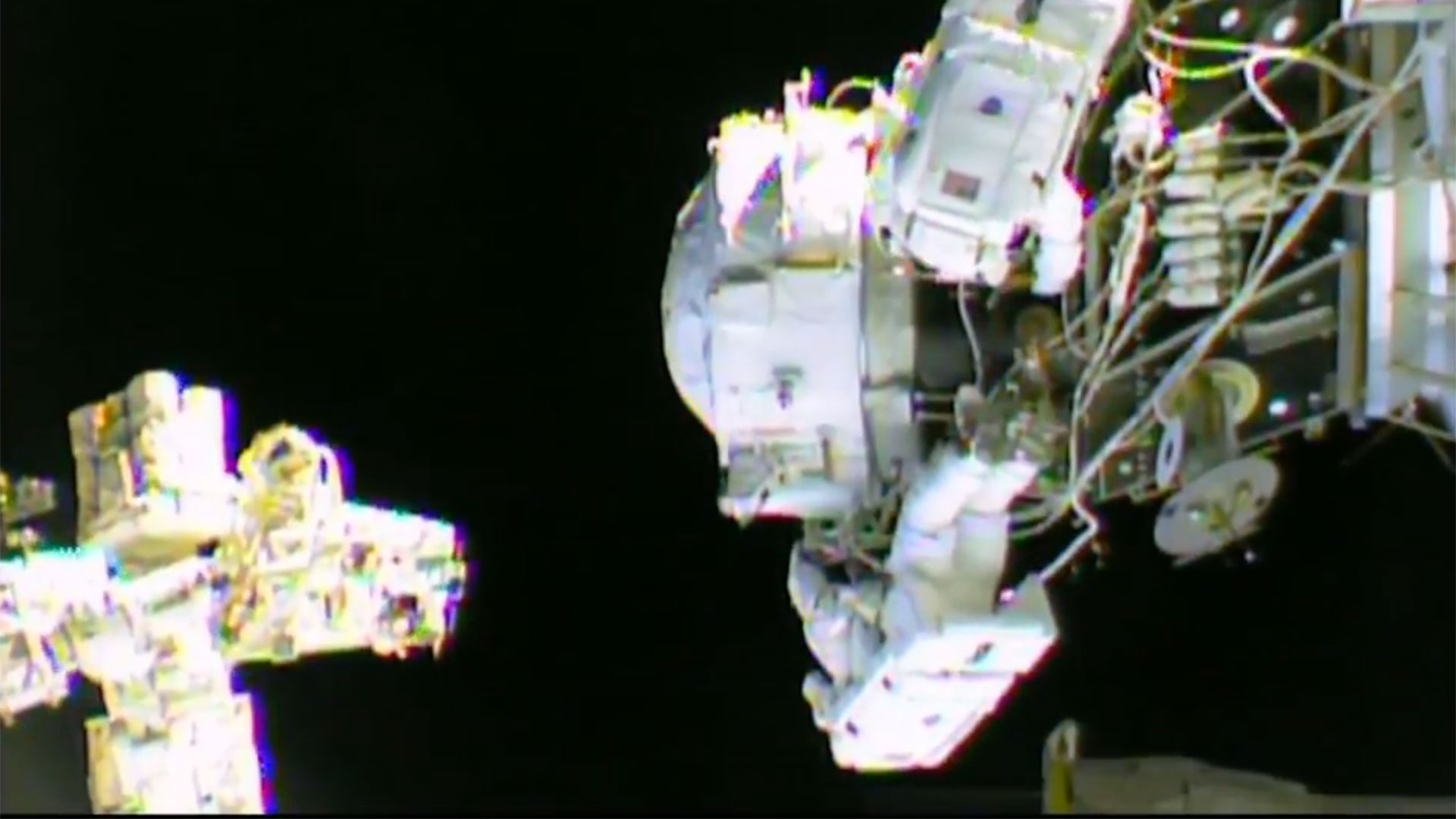

When it comes to building repair, fixing a door ranks as one of the easier tasks amateur Tim Taylors can tackle. Unless, of course, your house is spinning around the planet at 17,000 miles per hour, the door has to be strong enough to keep the air inside from being sucked into a vacuum, and you’re clad in a bulky suit designed to keep you alive and safe from extreme heat and cold. Y’know, kind of like what two astronauts are dealing with right now as NASA works to install the International Space Station’s new docking port.
Flight Engineer Kate Rubins and Commander Jeff Williams ventured out of the space station shortly after 8 o’clock Friday morning, Eastern Daylight Time, for a six-hour mission that combines the humbling beauty of space travel with the humbling monotony of home repair. To install the docking port—the first of two that will be fitted to the ISS—NASA engineers on the ground used the station’s Canadian-made robotic arm to maneuver it close to the Pressurized Mating Adapter, which sounds more like a device used by horny high schoolers on prom night than part of a multi-billion dollar space station. Williams and Rubins simply need to finish affixing the bulky modules together…which is easier said than done when there’s effectively no gravity and you’re wearing a spacesuit.
If talk of a new docking port for the ISS sounds vaguely familiar, well, that’s because this isn’t the first time The Drive has touched on this orbital door. Last month, the new portal was blasted into orbit in a SpaceX Dragon craft, with the reusable first stage of the Falcon 9 rocket waking up a few Floridians as it sonic-boomed its way back to Earth. Known as the International Docking Adaptor, or IDA, the new door for the ISS will enable the multi-national supra-Terran complex to dock with a wider range of current and future space craft, including the SpaceX Crew Dragon and the Boeing CST-100 Starliner.
The NASA livestream will be broadcasting until around 2 p.m. EDT.
